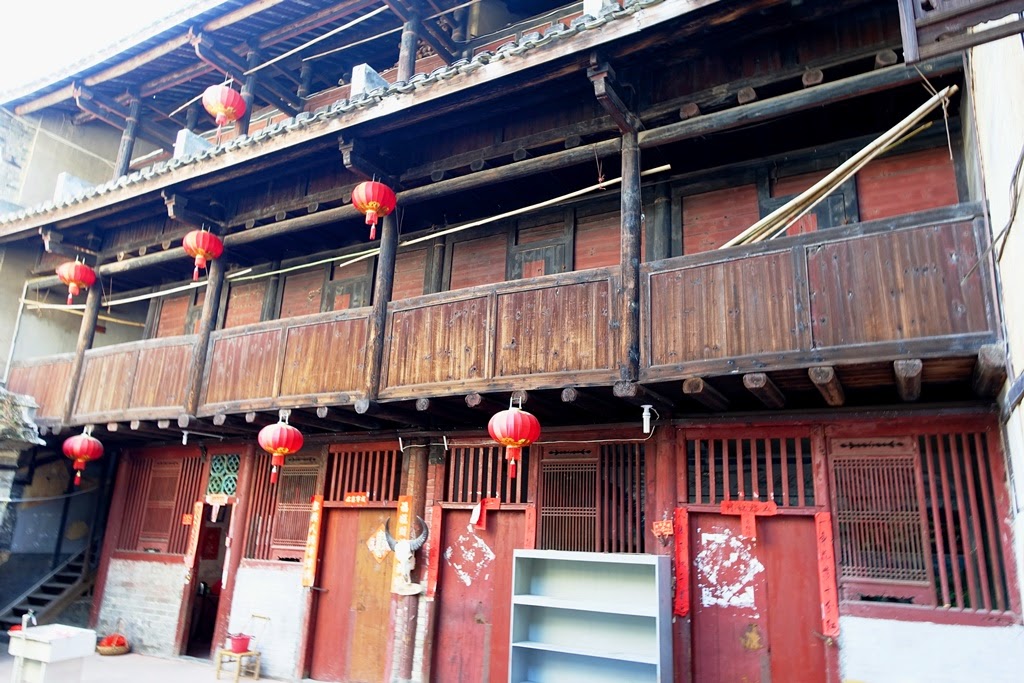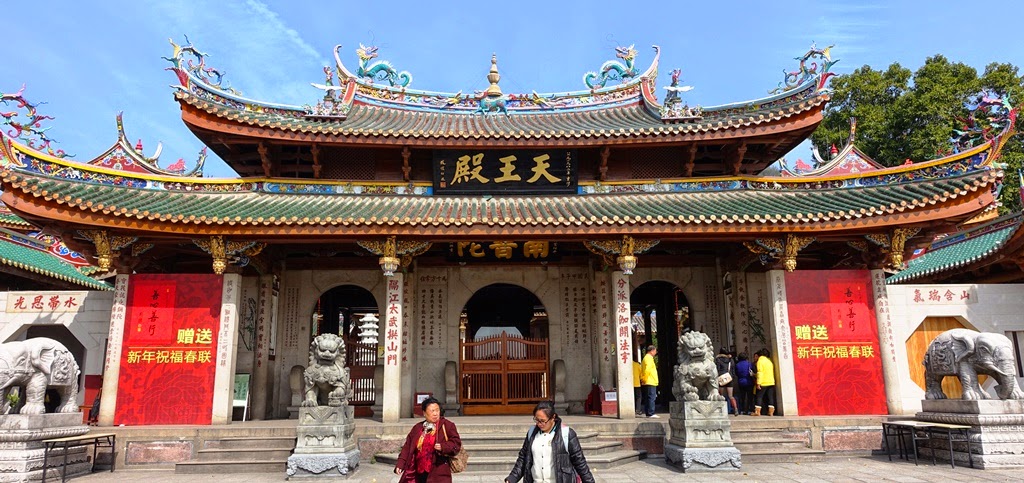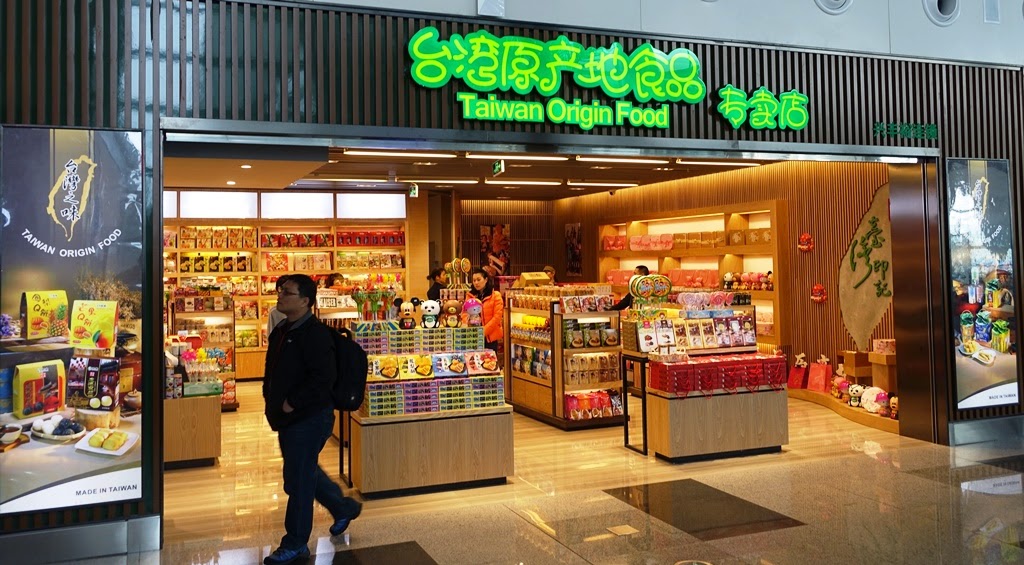The girls enjoy a Sunday morning breakfast on the streets of Gŭlàng Yŭ 鼓浪屿
Off to see the tŭlóu 土楼, those multistory mud citadels home to the Hakka 客家 people of southwestern Fújiàn Province 福建省. Coming in shapes that are round, square or rectangular, they serve has homes to entire clans of people, and were intended to protect the members within from bandits, wild animals and their non-Hakka neighbors (the Hakka have been described as the Romany of China, and have been about as popular). Since some of them were given World Heritage Status by UNESCO in 2008, tulou have now become sightseeing attractions, a must-see on many tour groups' itineraries, and in a case of "When in China..." we left Gulang Yu early on Sunday morning to venture into Hakka country.
Getting to the tulou from Xiàmén 厦门 involved a 3½-hour bus ride through terrain that brought to mind rural Taiwan, and not necessarily in a pastoral, idyllic sort of way. Xiamen city itself, with its wide, palm tree-lined streets, evoked images of Kaohsiung 高雄, while the drive through the dusty towns and ugly concrete boxes that make up the countryside reminded me of the less attractive parts of, say, Miáolì County 苗栗縣.
We eventually arrived in the small village of Liùlián 六联, gateway to the Hóngkēng Tulou Cluster 洪坑土楼群. Just outside the entrance to the cluster (admission is 90 RMB/$14.50) sits the massive Huangxin Lou:
We were taken to the Fúyù Lóu Chángdì Inn 富裕楼常棣客栈. The inn takes up 20 rooms of a extensive 160-room, 134 year-old tulou; our room was one of the few that had heating and an en suite bathroom. The view looking down onto one of the many courtyards:
While we were having lunch, a steady stream of tourists led by megaphone-toting guides came through the compound. Villagers have clearly benefited from the tourist RMB generated by the UNESCO listings, but in return they have to allow visitors entrance to what is essentially their apartment complexes:
After lunch, we did some exploring. Amber checks out the courtyard of a neighboring tulou, all the while watching her step so as to avoid the numerous chicken droppings on the ground:
Built between 1875 and 1908, the circular Rúshēng Lóu 如升楼, at one ring and 16 rooms, is the smallest tulou in the cluster:
Looking at the Fuyu Lou from across the river, showing just how large is the compound:
The tulou next door was smaller but still imposing:
The Ancestral Temple of the Lin Family had stele in front commemorating local boys who had done good, such as by passing imperial exams or fighting in wars:
A banyan tree spreads its limbs...:
The 1912 Zhènchéng Lóu 振成楼 is by far the biggest tulou in the Hongkeng cluster. There are a total of 222 rooms contained within two concentric circles:
After a quick peek into the tulou next to ours, it was time to return to the Fuyu Lou Changdi Inn to have dinner and then retire for the night. On the way back to the inn, Amber purchased a mini replica of the Zhencheng Lou:
We were up early the following day following a comfortable night's rest (thanks to the modern miracles of electric heating and indoor plumbing) to catch the return bus to Xiamen from Liulian:
The three hour-plus bus ride went quickly, with entertainment provided by videos and the sounds of an elderly passenger constantly throwing up into plastic bags. Except for the occasional tulou or passing train, there wasn't much to see from the bus windows:
With time to kill before our afternoon flight back to Shànghăi 上海, we visited one of the most famous temples in Fujian, Nánpŭtuó Temple 南普陀寺. Because getting priorities straight is of utmost importance, we began by having lunch at the temple's vegetarian restaurant:
With my wife staying outside to watch the suitcase, my daughter and I went in to explore the Buddhist temple complex. There was the Big Treasure Hall, containing the Buddhist trinity representing the past, present and future (no photography allowed)...:
...and the eight-sided Hall of Great Compassion, with its 1000-armed statue of Guanyin, facing the four directions (photography permitted, but too much glare and reflection off the glass):
For me, though, the highlight was the walk up the steps behind the temple, leading to a lookout with good views over Xiamen:
The trail continued further on into the hills, but time was running short, so we descended, returned to Pamela and hailed a taxi to take us to the airport, where my wife was once again bemused at all the shops selling items from Taiwan. It seems people visit Xiamen to experience Taiwan:
Postscript: it's Friday as I write this, and I still haven't been back to work since we returned to Shanghai on Monday evening. After arriving at Hóngqiáo Airport 上海虹桥国际机场, Amber and I opted to have dinner at the McDonald's in Terminal 2. Pamela, never a fan of fast food, chose instead to eat noodles at a Chinese joint nearby. The next morning (Tuesday), my daughter was throwing up while I was periodically running to the bathroom with diarrhea. My wife, of course, was fine. Amber has since gotten better and has returned to school (while also celebrating her 9th birthday); I, on the other hand, have continued to feel worse and can't stray too far from the nearest toilet. I've missed four days of work so far, while waiting for the medicine to do its stuff (and avoiding the Imodium I was prescribed, as I was advised by the doctor it's better to let my body flush itself out). In times such as these, it's easy to become a foxhole atheist and start making promises to gods, but once I'm over this stomach bug, I resolve never to touch fast food again. This experience in no way should be taken as a poor reflection on Xiamen, Gulang Yu or the Hakka areas of Fujian. I didn't even try the jellied sea worms, but looking at the photo of them I posted on Facebook isn't doing my intestinal tract any good.




































No comments:
Post a Comment